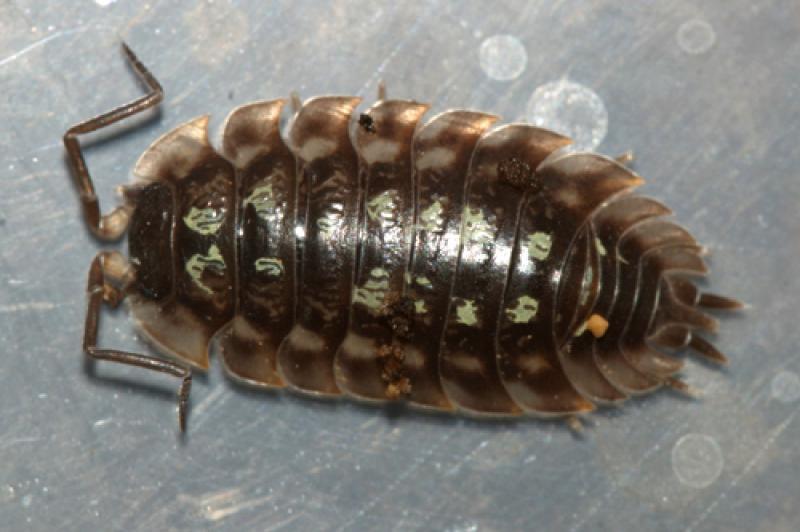QUESTIONS: I have a problem that I would like an answer to, that considers other solutions than poisons. I have sow bugs in the basement. They arrive every year about March or April and hang around for about four to five weeks.
I would like to know how they get into my basement. What can I do to prevent them from getting in and once in, how can I get rid of them? Right now I am vacuuming them up every day, several times a day. They are so ugly!
The pest-control people have only one answer and that is poison. There must be another way. Other people don't have sow bugs in their basement. Why me?
-- Gladys Gibson, email
Can you please tell me how to get rid of sow bugs? They are grossing me out. I know they like damp places and have found them in the basement, but this spring they have been coming in around the back door area. I have also found them in other areas of the house, as many as six to eight at a time. I called a local exterminator and they recommended an insecticide that is supposed to be environmentally friendly and is supposed to repel them, but it doesn't seem to work.
The floors in the entrance are tiled and heated in the winter. The rest of the house has hardwood. The humidity is low and the house is 33 years old. The floors are dry and I have no mat near the door.
Can you help? I would really appreciate a solution to this problem.
-- Theresa Patel, Gimli, Man.
ANSWER: I was surprised to receive both this email and letter in the mail at almost the exact same time.
There is no evil sow bug wizard that is sending these nuisance invertebrates into your home like one of the 10 plagues. Trying to prevent pests and insects from entering the living space in our homes is a common chore. It is quite normal to see anything from flying insects like mosquitoes and wasps to crawling bugs such as ants and centipedes inside our castles. The good news is that sow bugs are probably the most benign of these critters and rarely pose any issue other than being a nuisance.
While chemical pesticides may be a quick and easy temporary solution to eliminating these little oval-shaped crawlers, your desire to prevent their use is commendable. Also, their use will treat the symptom of the problem, not the cause. The underlying root of the problem with these bugs is moisture. They are almost always found in damp areas, which is why basements are an ideal environment for them to propagate. They may also be found slowly crawling throughout the home, but often originate in basements or other damp areas such as windows or exterior walls.
The first item to address in eliminating these bugs is to prevent enclosed areas that may trap moisture, especially in basements. Excessive storage, particularly against exterior foundation walls, should be avoided. Poor air circulation in these cool areas may lead to condensation, which will provide the moisture these little pests crave. This also applies to closets in the upper floors of the home, as these are often jammed full of clothes and boxes and rarely have enough air movement to prevent damp conditions. Use of furnace fans on continuous low speed will also help move the air around the home, even when the heat or AC is not operating, preventing condensation.
Another often-neglected basement area where these and other bugs like to congregate is the floor drain or sump pit. If these have open or poorly sealed lids, you may find quite a few "ugly" insects living in these wet environments. Sealing these areas to prevent pest intrusion may provide significant relief as the weeping tiles under your basement floor are an ideal breeding area.
Finally, looking at the exterior of your house for small openings may provide further answers for means of egress for these little pests. Rotten window or door sills, holes in siding or stucco, damaged vent hoods, or moisture-damaged drywall or plaster may be an easy target for bugs to get in your home. Fixing these small areas may prevent the initial entry of the sow bugs, while minimizing wet areas for breeding should provide the relief you both seek.
Ari Marantz is owner of Trained Eye Home Inspection Ltd. and president of the Canadian Association of Home & Property Inspectors -- Manitoba (www.cahpi.mb.ca). Questions can be emailed or sent to: Ask The Inspector, P.O. Box 69021, #110-2025 Corydon Ave., Winnipeg, MB. R3P 2G9. Ari can be reached at (204) 291-5358 or check out his website at www.trainedeye.ca.




